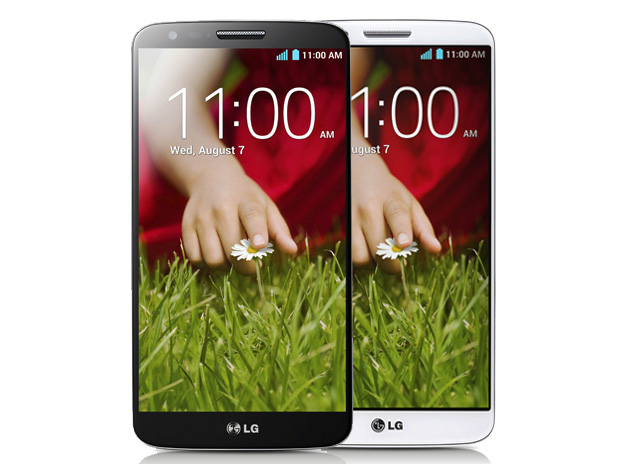'ZDNET Recommends': What exactly does it mean?
ZDNET's recommendations are based on many hours of testing, research, and comparison shopping. We gather data from the best available sources, including vendor and retailer listings as well as other relevant and independent reviews sites. And we pore over customer reviews to find out what matters to real people who already own and use the products and services we’re assessing.
When you click through from our site to a retailer and buy a product or service, we may earn affiliate commissions. This helps support our work, but does not affect what we cover or how, and it does not affect the price you pay. Neither ZDNET nor the author are compensated for these independent reviews. Indeed, we follow strict guidelines that ensure our editorial content is never influenced by advertisers.
ZDNET's editorial team writes on behalf of you, our reader. Our goal is to deliver the most accurate information and the most knowledgeable advice possible in order to help you make smarter buying decisions on tech gear and a wide array of products and services. Our editors thoroughly review and fact-check every article to ensure that our content meets the highest standards. If we have made an error or published misleading information, we will correct or clarify the article. If you see inaccuracies in our content, please report the mistake via this form.
LG G2 review: Recommended, unless you need storage expansion


LG G2
pros and cons
- Superb 5.2-inch screen
- Excellent battery life
- Some clever software features
- No MicroSD slot for storage expansion
- Non-removable backplate
- Rear-mounted power button
- Editors' review
- Specs
The LG G2 is the flagship handset from a company that arguably doesn't get the credit it deserves. The G2 is LG's answer to the likes of the Samsung Galaxy S4, HTC One, Sony Xperia Z1 — and of course Apple's iPhone 5s. With a large screen and impressive battery life, The LG G2 hits some important targets — but does it match its high-end competition and justify its high price — £340 (ex. VAT, or £408 inc. VAT)?
Design
The marketing for the LG G2 mentions the positioning of its on/off button and its 'near zero bezel'. These are certainly distinctive features, and while the former won't be to every taste, the latter is likely to be welcomed by all. LG has managed to cram a 5.2-inch screen, which we measured as 65mm wide, into a chassis that's just 70.9mm wide. The bezel along the long edges really is almost non-existent, and is surprisingly narrow at the top and bottom too. A speaker, front camera and alert light are squeezed in at the top, and the overall effect is of a phone that's almost all screen.
LG's flagship G2 has a 5.2-inch IPS screen and is powered by a top-end Qualcomm Snapdragon 800 SoC with 2GB of RAM. Our review sample had 32GB of internal storage, but no MicroSD slot for adding extra capacity. Note the power button and volume rocker on the back of the handset.
Despite its size, the screen doesn't seem overly large — although we found it impossible to use one-handed. The display itself is superb, with a full-HD resolution of 1,920 by 1,080 pixels giving it a pixel density of 424ppi that's only beaten by the 4.7in. HTC One (469ppi), 4.95in. Google Nexus 5 (445ppi), 5in. Samsung Galaxy S4 and 5in. Sony Xperia Z (both 441ppi). The IPS panel has great colour rendering and excellent viewing angles. It's difficult to find fault here.
That other design element we mentioned, the positioning of the on/off button, is likely to be a little more contentious. Rather than locate this on an edge, as is the norm, LG has placed it on the back, beneath the camera lens. It's bounded top and bottom by the volume buttons.
The small lozenge-shaped power switch is slightly raised, making it possible to find by touch alone. We found a bit of a fiddle at first, but did get used to it after a while. LG has clearly recognised that the ergonomics will remain an issue for some people, and has provided the option to double-tap the screen for locking down and opening the phone.
Although relocating the on/off button might have been a better move, we have to admit that the double screen tap is a great idea. It's particularly useful when the handset is sitting on a desk, and we'd like to see more phone-makers adopt it.
The volume rocker that surrounds the on/off button is much less of an issue. It is less frequently used than the power button, and we found it easy to access with the handset in a pocket.
Top ZDNET Reviews
The LG G2 takes a microSIM that goes into a caddy on the left edge of the chassis. Apart from the caddy and a headset jack and Micro-USB connector on the bottom, the edges of the handset are free of clutter. They curve into the backplate which is shiny, shows up finger-grease and is not particularly grip-friendly.
The only other edge-mounted feature is a pair of speaker grilles on the bottom of the chassis. These deliver a healthy volume, although there's some distortion at the very loudest level. It's easy to cover these grilles when you're holding the handset in landscape mode (when gaming for example), which will muffle the sound.
Features
As LG's flagship handset, the G2's specifications are impressive, with one annoying (but all too common) exception: there's no MicroSD card slot for storage expansion. Our review unit had 32GB of internal storage, but that's not available in the UK, where 16GB is standard. The operating system and various LG extras took up 8GB of space on our review handset, leaving 24GB for user apps and data. The 16GB model will have even less free storage to play with, and it's a real pity that capacity is hampered in this way.
Front touch button configuration options for the LG G2.
The processor is Qualcomm's Snapdragon 800 running at 2.26GHz. It's the current processor of choice for top-end handsets and, backed up by 2GB of RAM, is very zippy: screen transitions, web page renders and video playback were all fast and smooth. We've no complaints about this handset's speed.
This is an LTE handset with a full complement of wireless features — Wi-Fi (dual-band 802.11a/b/g/n/ac) and Bluetooth (4.0), plus NFC and GPS (with A-GPS and GLONASS support). Music support includes the lossless FLAC codec — one of a number of extras that LG has overlain on top of Android 4.2.2.
The camera is a case in point. The rear camera has a 13-megapixel resolution — a healthy specification, and one that produces some nice shots. Optical image stabilisation helps reduce the likelihood of blurred images (especially in low light), and you can take photos that include what both the front (2.1Mpixel) and rear cameras can see; there's also a mode that shoots five images quickly, allowing you to retain the one you like best.
You can configure the front touch buttons to your liking, changing the configuration of the left and right buttons and adding a fourth button either to launch LG's QuickMemo app — which lets you take a screenshot and annotate it, and then save or share it — or to pull down the notification panel.
QSlide provides a collection of pop-up applets such as this calculator.
The notification icons can be edited to include just the shortcuts you require. QSlide is an additional utility that sits in the notifications area and provides access to a range of pop-up apps that open on top of whatever you are doing at the time. These are resizeable and include not just applets like a calculator and a note-taker, but also weightier apps such as a file manager.
When you plug in a headset, four shortcuts pop up pointing to relevant apps, and you can edit these so that your favourite quartet is offered. There's also an eye tracking system that pauses video if you look away from the screen and keeps the screen awake while you're looking at it — overriding whatever time-out you've set.
The LG packs a 3,000mAh battery beneath the G2's non-removable backplate, claiming up to 17.5 hours of 3G talk and 900 hours (37.5 days) on standby. For once we're not complaining about having to find mains power mid-afternoon, or even early evening. Even if you're a power user, you should be able to get through a day without charging the battery. This feature alone may draw you to the LG G2.
Conclusion
LG has done a great job with the G2, and its battery life will be a big plus for many potential buyers. The power button placement is odd, but isn't a deal-breaker. The G2's only real drawback is its lack of MicroSD storage expansion. If don't need this, then it's well worth shortlisting.